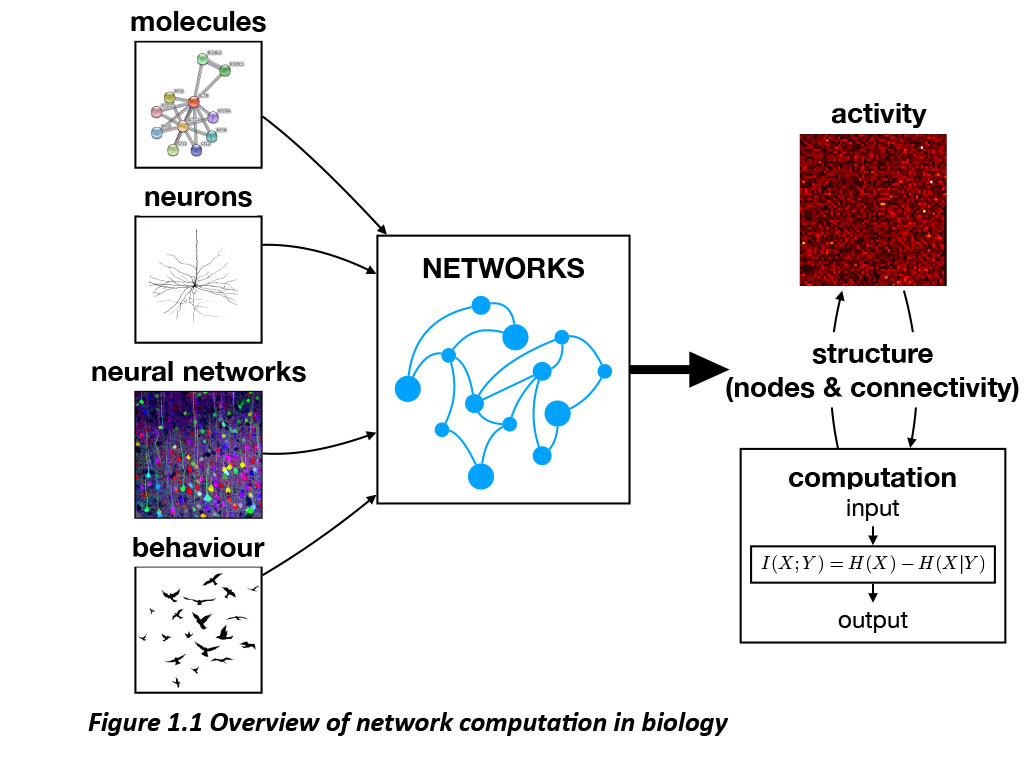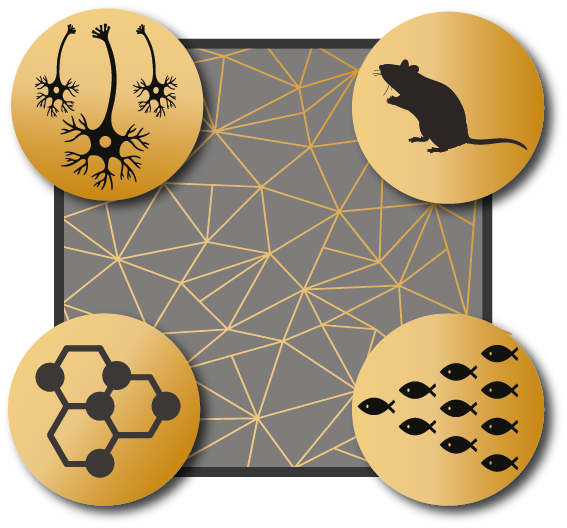SmartNets
In this Marie Skłodowska Curie Innovative Training Network “SmartNets”, 7 PIs from 5 universities work together with 6 partner organisations to understand network computations.

Think of the the murmuration of starlings, the schooling of fish, or even hypes on social media or the spreading of powerouts: the behaviour of a network is critically determined by its structure. This structure induces collective emergent behavior that can only be understood by analysing the whole network in relation to its constituent parts. Particularly in the brain, the architecture of the network is essential for its functioning: information transfer and processing within and between networks.
The relation between network structure and information processing capacity is essential at every scale: from molecules and genes to large neural networks to populations of behaving agents, on every level nodes form complex networks underlying the most essential functions of the functioning of the brain, body and society. Only recently, with high-throughput techniques, have we begun to collect the vast amounts of data needed to study the structure and functioning of these networks. However, analysing these data is still a challenge and the nature of complex network processes are still poorly understood.
In order to compare networks, simulated or physical ones, or healthy versus diseased, network analysis and visualization tools are needed across three analysis dimensions: structure, activity and information processing. Many quantitative tools exist for analysing networks, but they are mostly restricted to one application domain or network type and often only address one of these dimensions. The novelty of our contributions will lie in the combination of existing and new techniques, from different research domains, and across the three analysis dimensions. By transcending specific data sets or domains, we expect to open up new insights into the properties, behaviour and dynamic evolution of biological networks. We will train the data scientists of the future, that will be able to analyse biological networks across levels, domains and types.
| PI/Supervisors | Institute | Country |
|---|---|---|
| Fleur Zeldenrust | Radboud University | Netherlands |
| Tansu Celikel | Radboud University | Netherlands |
| Julijana Gjorgjieva | Technical University of Munich | Germany |
| Iain Couzin | Max Planck Gesellschaft | Germany |
| Yiota Poirazi | Foundation for Research and Technology | Greece |
| Georges Debrégeas | Sorbonne Université | France |
| Joni Dambre | Ghent University | Belgium |
